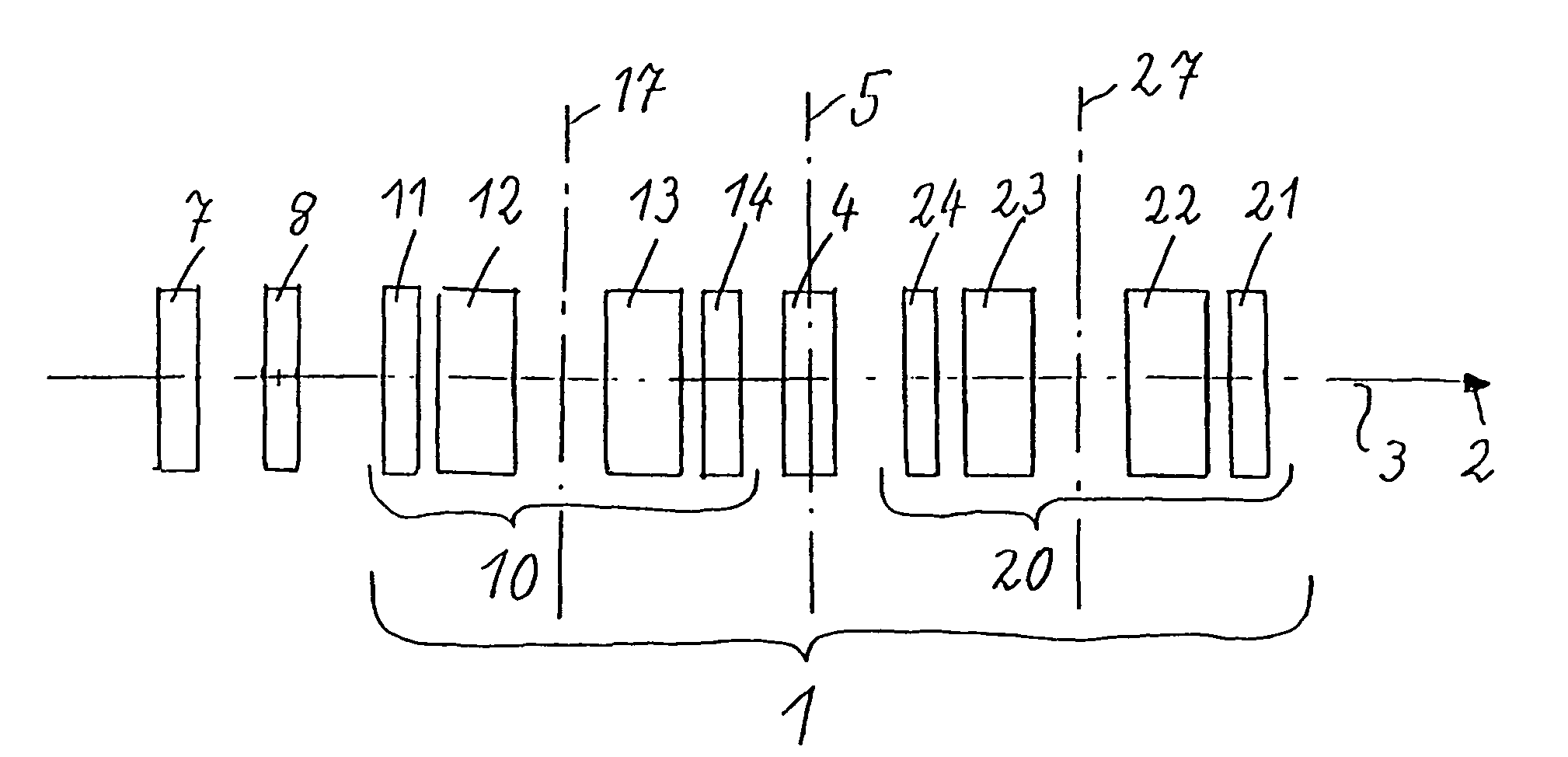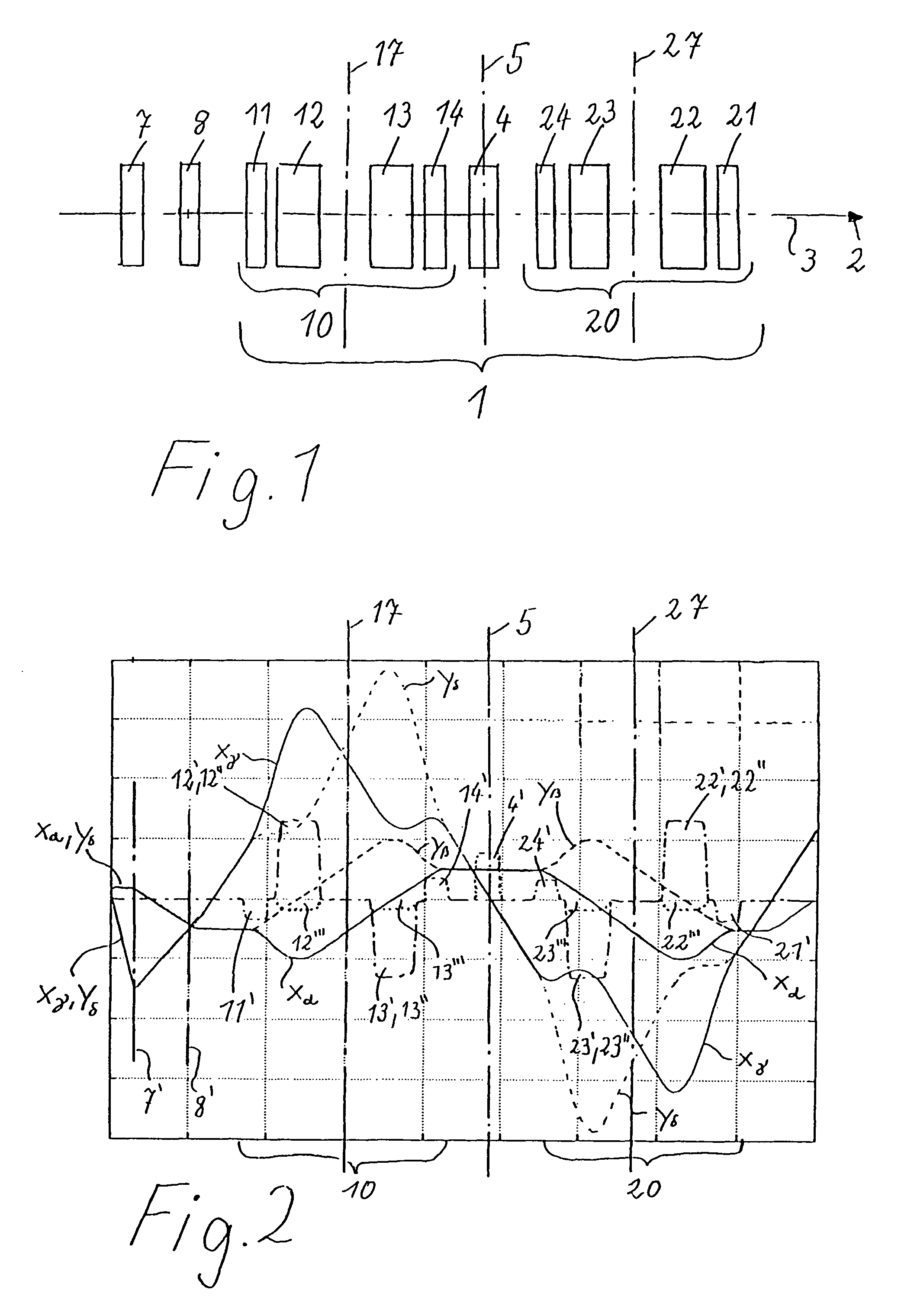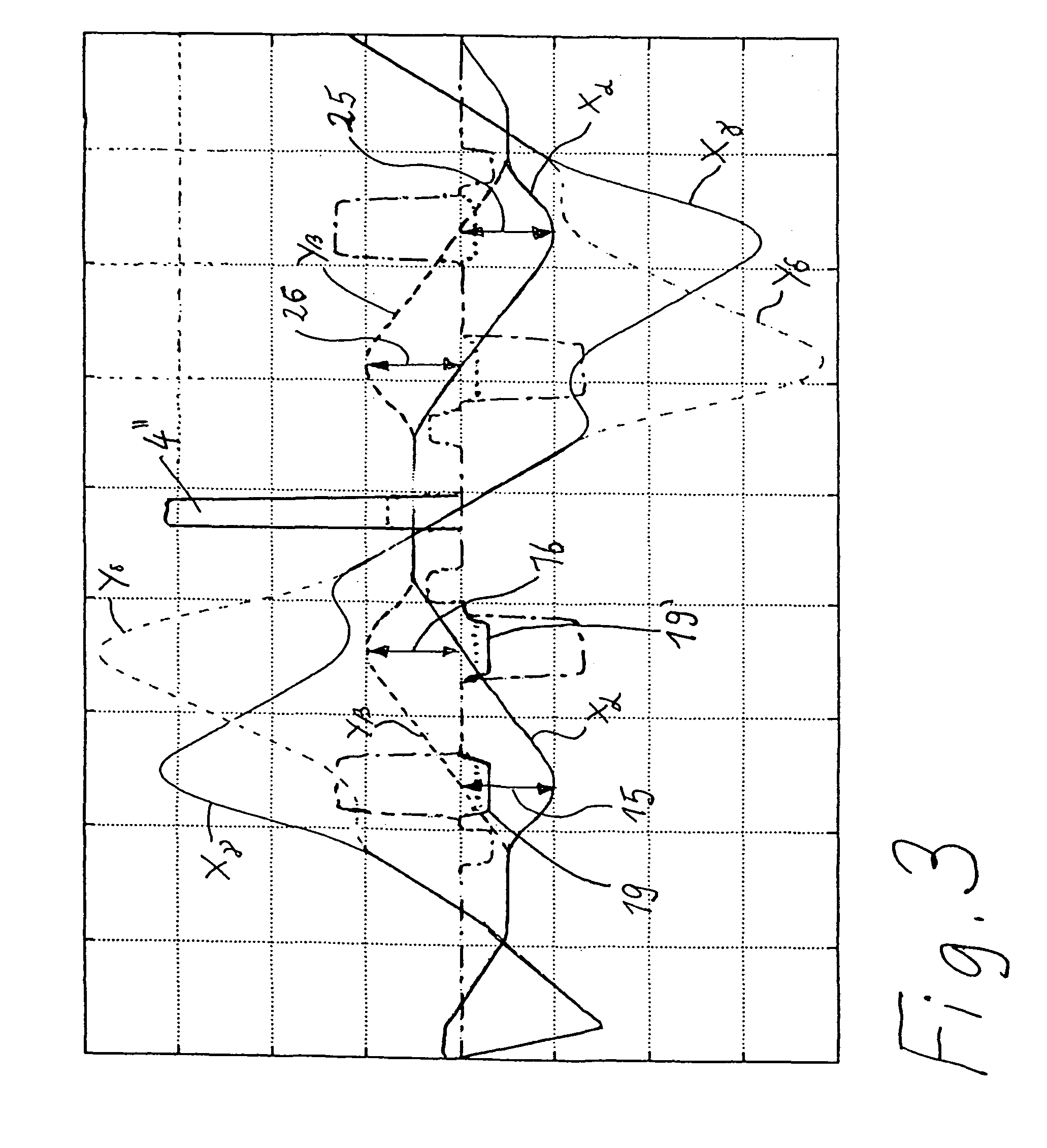Corrector for axial and off-axial beam paths
a particleoptical system and correction technology, applied in the field of particleoptical correction technology, can solve the problems of geometrical image aberration, aperture aberration, complicated resolution limit of half a wavelength, etc., and achieve the effect of eliminating the astigmatism of third order
- Summary
- Abstract
- Description
- Claims
- Application Information
AI Technical Summary
Benefits of technology
Problems solved by technology
Method used
Image
Examples
Embodiment Construction
[0043]All illustrations are shown in accordance with the following system:
[0044]Identical reference numerals always show identical parts, field dependences etc. All reference numerals between 11 and 19 thereby relate to the first correction piece 10, and all reference numerals between 21 and 28 relate to the second correction piece 20. The correction piece 10 has multipole elements 11, 12, 13, 14, and the correction piece 20 has multipole elements 21, 22, 23, 24. The multipole elements with the same final digits have the same construction and generate identical fields with respect to the basic functions of the invention in accordance with FIG. 2. The reverse order of the reference numerals shown in FIG. 1, i.e. first 11, second 12, third 13 and fourth 14 multipole elements of the correction piece 10, and first 24, second 23, third 22, and fourth 21 multipole elements of the correction piece 20, symbolizes the symmetry with respect to the center plane 5, with reverse order of the mul...
PUM
 Login to View More
Login to View More Abstract
Description
Claims
Application Information
 Login to View More
Login to View More - R&D
- Intellectual Property
- Life Sciences
- Materials
- Tech Scout
- Unparalleled Data Quality
- Higher Quality Content
- 60% Fewer Hallucinations
Browse by: Latest US Patents, China's latest patents, Technical Efficacy Thesaurus, Application Domain, Technology Topic, Popular Technical Reports.
© 2025 PatSnap. All rights reserved.Legal|Privacy policy|Modern Slavery Act Transparency Statement|Sitemap|About US| Contact US: help@patsnap.com



